Author: Mario Laul, Placeholder Researcher Source: Placeholder Translation: Shan Ouba, Golden Finance
Decentralized public blockchain networks have been around for about 15 years, and the associated crypto assets are currently experiencing their fourth major market cycle. Over the years, especially since the launch of Ethereum in 2015, a lot of time and resources have been spent on theoretical research and developing applications on these networks. While impressive progress has been made in financial use cases, other types of applications have struggled, largely due to the complexity of providing a scalable and seamless user experience within the limitations imposed by decentralization and fragmentation between different ecosystems and standards. However, recent technological advances within and outside the blockchain industry have not only made broader applications more feasible,
Blockchain’s early adoption was driven by a rather narrow definition of its core functionality: enabling the secure issuance and tracking of digital value without reliance on centralized intermediaries such as traditional financial or government institutions.Whether we’re talking about blockchain-native fungible tokens such as BTC and ETH, on-chain representations of off-chain assets such as national currencies and traditional securities, or non-fungible tokens (NFTs) representing artwork, in-game items, or any other type of digital product or collectible, blockchain tracks these assets and allows anyone with an internet connection to trade with them globally without ever touching centralized financial rails. Given the size and importance of the financial sector, especially in the context of growing digitization, within this narrow framework, there are currently five types of blockchain applications with meaningful product-market fit, beyond the underlying asset ledgers and the decentralized networks that maintain them: applications for issuing tokens, applications for storing private keys and transferring tokens (wallets), application tokens for trading (including decentralized exchanges, aka DEXs), applications for lending tokens, and applications that make tokens have a predictable value relative to traditional fiat currencies (stablecoins). As of this writing, Coingecko, a popular cryptocurrency market data aggregator, lists more than 13,000 individual crypto assets with a total market capitalization of approximately $2.5 trillion and daily trading volume of more than $10 billion. Nearly half of this value is concentrated in a single asset, BTC, with the vast majority of the other half spread among the top 500 assets. But the very long and growing tail of tokens, especially after NFTs were also included, shows how great the demand for blockchain is as a digital asset ledger.
According to recent estimates, around 420 million people worldwide hold crypto tokens, although many of them may have never or rarely interacted with decentralized applications. Leading hardware wallet manufacturer Ledger reports around 1.5 million monthly active users for its Ledger Live software, while popular software wallet providers MetaMask and Phantom claim around 30 million and 3.2 million monthly active users, respectively. Combined with daily DEX volumes of around $5-10 billion, on-chain lending markets with a capital value of around $3-35 billion locked in, and a stablecoin market cap of around $130 billion, these numbers represent the current level of adoption for the five applications mentioned above—still low relative to traditional finance and fintech, but still significant. Granted, these figures should be viewed in the context of the recent surge in crypto asset prices, but as blockchains become increasingly legitimized through regulation (the approval of spot Bitcoin ETFs and tailored regulatory frameworks such as Europe’s MiCA are recent notable examples), they are also likely to continue to attract new capital and users, especially in the context of growing integration with traditional financial assets and institutions.
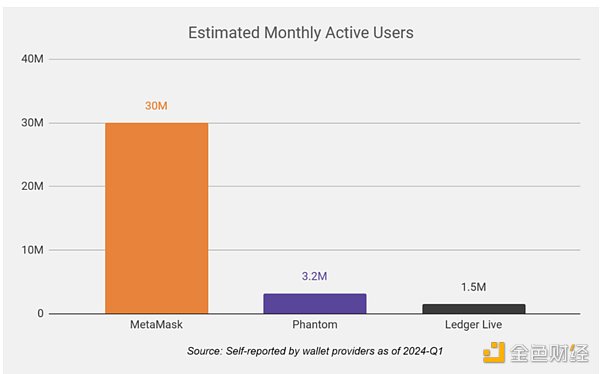
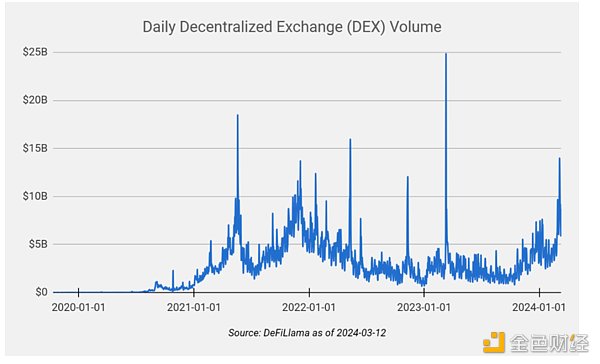
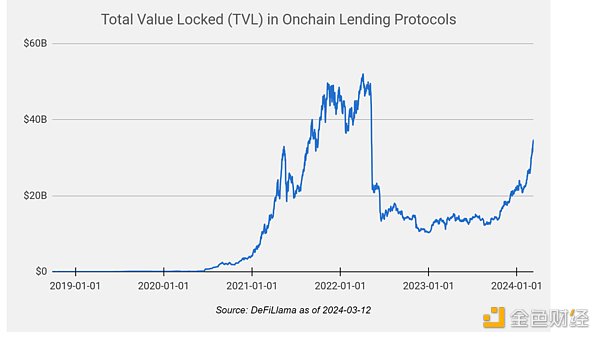
There are three main metrics that can be used as proxies for the level of interest in specific blockchains and applications: daily active addresses, daily transactions, and daily fees paid. An important caveat in interpreting these metrics is that they can all be artificially inflated with relative ease, and therefore represent the most generous estimates of organic adoption. According to on-chain data aggregator Artemis, six networks have performed well in all three metrics over the past 12 months (each ranked in the top 6 for at least two): BNB Chain, Ethereum, NEAR Protocol, Polygon (PoS), Solana, and TRON Network. Four of these networks (BNB, Ethereum, Polygon, TRON) are using a version of the Ethereum Virtual Machine (EVM), thereby benefiting from the extensive tooling and network effects around Solidity, a programming language created specifically for the EVM. Both NEAR and Solana have their own native execution environments, both based largely on Rust, which, despite being more complex, offers various performance and security advantages over Solidity, as well as a thriving ecosystem outside of the blockchain industry.
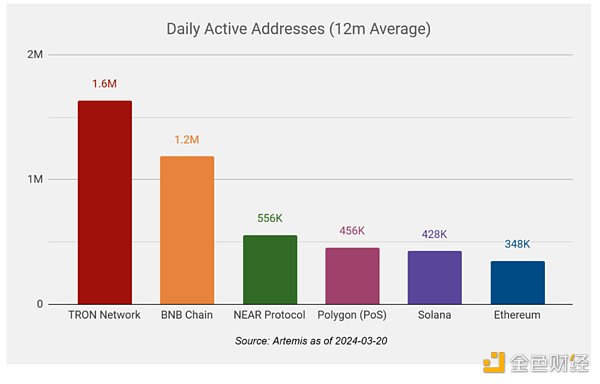
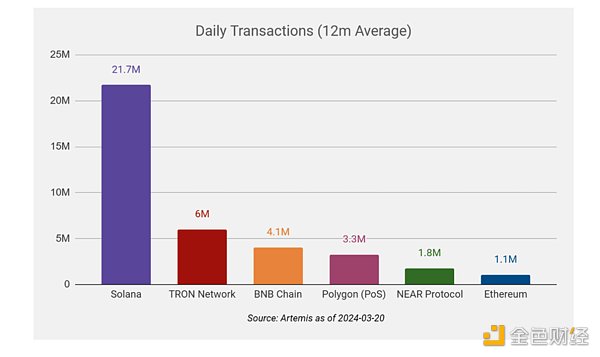
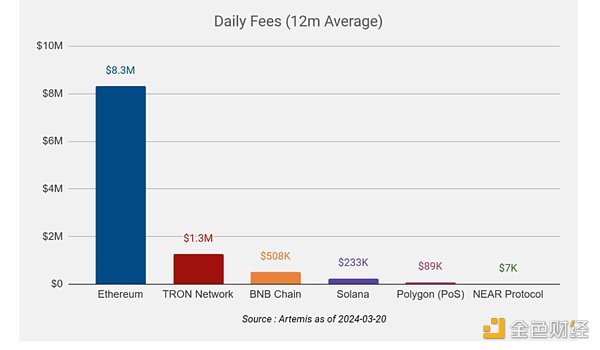
But where does this place blockchain in terms of the more ambitious vision of blockchain as a general-purpose application platform? For many years, the two biggest challenges facing the crypto industry have been (1) scaling blockchains (in terms of throughput and cost), and (2) enabling an effortless user experience without sacrificing the decentralization and security guarantees of the underlying infrastructure. In the context of scaling, a distinction is often made between more integrated and more modular. Solana is often used as an example of the former, while Ethereum and its growing ecosystem of general-purpose and application-specific layer 2 networks (rollups) exemplify the latter. In fact, the two approaches are not mutually exclusive, and there is considerable overlap and cross-pollination between them. But the bigger point is that, depending on whether the application in question requires shared state and maximum composability with other applications, or doesn’t care about seamless interoperability while gaining a lot from full sovereignty over its governance and economy, both now have proven options for scaling blockchains.
Significant progress is also being made in improving the end-user experience of blockchain applications. Specifically,thanks to technologies such as account abstraction, chain abstraction, proof aggregation, light client validation, and more, there are now ways to securely clear some of the major UX hurdles that have plagued cryptocurrencies for years: having to store private seed phrases, requiring network-specific tokens to pay for transaction fees, limited account recovery options, and over-reliance on third-party data providers, especially when navigating between multiple independent blockchains.Combined with the growing number of decentralized data stores, verifiable off-chain computation, and other backend services for augmenting the functionality of on-chain applications, the current and upcoming application development cycle will prove whether blockchain will play its primary role as global financial infrastructure, or serve blockchain as something more general. The latter has always been compelling in theory, given the vast array of use cases beyond DeFi that would benefit from greater resilience and more user-centric control over data and transactions, such as online identity and reputation, publishing, gaming, physical infrastructure like wireless and IoT networks (DePin), decentralized science (DeSci), and addressing authenticity in a world of increasingly AI-generated digital content. Now it’s becoming feasible in practice.
 JinseFinance
JinseFinance











